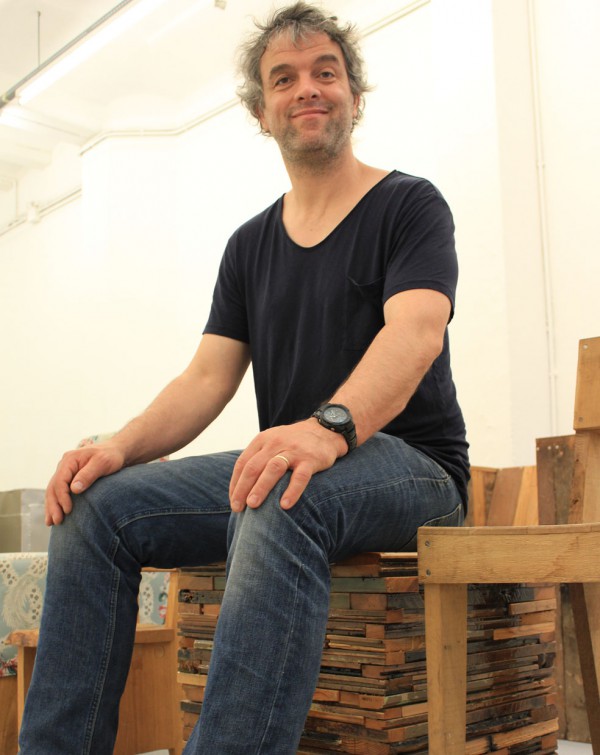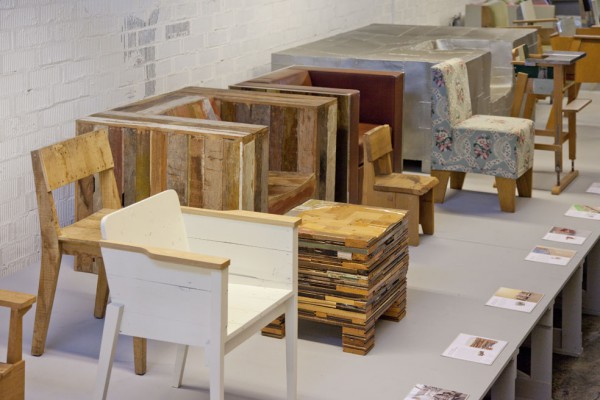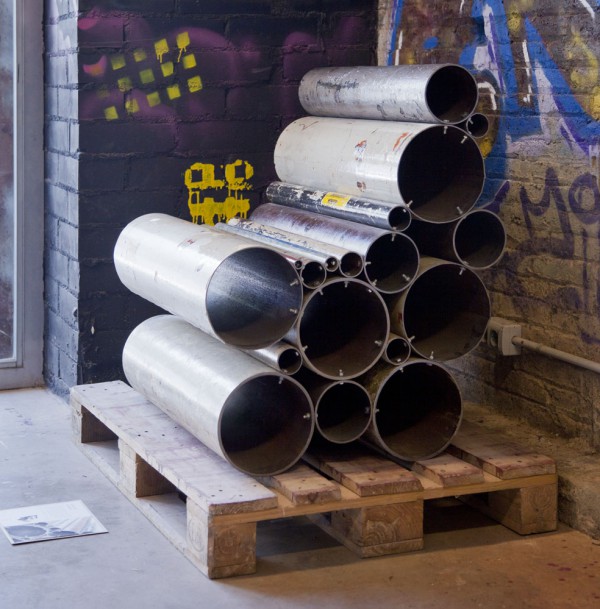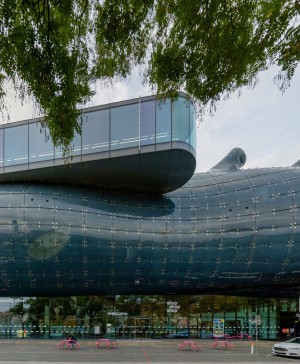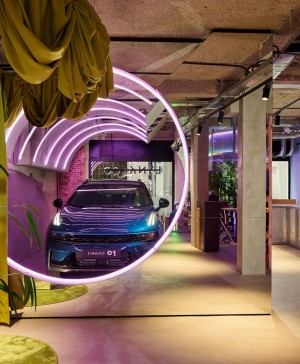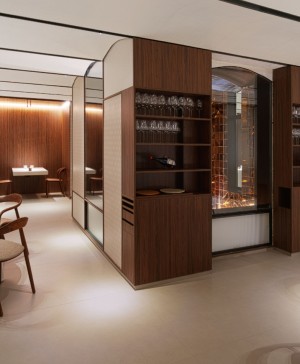“Ecodesign is not a fad, it’s a necessity” – Our readers interview Piet Hein Eek.
During the last weeks, we have given the chance to our readers of sending questions to Dutch designer Piet Hein Eek and here they come the answers. This unusual interview was possible thanks to the cooperation of Roomservice Barcelona gallery, where his work is permanently on show and it is available to purchase. The gallery has also recently brought to Barcelona the exhibition ‘Zitten’ about the chairs designed by Piet Hein Eek along the last 20 years, displayed both in Roomservice and Bau University.
Piet Hein Eek has created a unique style with his furniture made of wood and other recycled materials. His working process is based not only on the recycling and recovery of materials but also in the ability to maintain and beautify its scrap status. In October 2010 he opened The Factory in Eindhoven, a massive half showroom half workshop space of 10,000 square meters.
Piet Hein Eek at Roomservice Barcelona gallery last June.
Valeria: You have worked with different materials but in your work there is predominantly wood. Is this the material you like the most? Why?
No, I am inspired by all materials, in combination with different techniques and handicraft processes. But wood is very accessible, both in terms of the machines and the material itself. For that reason it was an obvious choice to work with wood but right from the start we worked with all kinds of materials. Actually, steel is my favourite material to work with. Apart from a large steel and wood workplace, we also have a ceramics studio and we have our own upholstery workshop too.
Rosa: How is the selection process of the wood you are going to use?
Because we are already working with scrap wood since 1993 you might say that there is a culture in the company about which colours and structures to use, for which purposes and perhaps the most important thing: the colours to avoid.
Martina: How and where do you find inspiration? Does every of your designs have a background, are they the result of a new concept?
My inspiration always comes from the material, the techniques I’m going to use and handicraft processes.
Zitten exhibition at Bau University.
Sira: Through the retrospective “Zitten” at Roomservice Barcelona, and since the first chair that you made, how do you think your designs have evolved? Have you varied the way you make furniture?
The possibilities grew by the growth of the company but I always kept working and designing with the possibilities available. But more and more I realise that because we are such a small company manufacturing our products in small quantities, it is very important to make products which have a very iconic appearance. If others want to copy them, it is at least clear that we are the originals. This is a rather new idea that came to me when we finished the upholstered enormous beams sofa.
Apaletarte Sevilla (Reciclaje y Transformaciones): We love the colours of each single piece that shape your designs and the use that you give to them. As an artisan, I have always had this doubt, where does these materials come from?
In Holland there is a rich culture of building with wood and also of recycling. My father used to make houses for rabbits in the garden from old wood. I was the first to use the wood for domestic purposes. All the wood we use is really old, we never paint it or manipulate the colours in any way.
Zitten exhibition at Roomservice Barcelona gallery.
Ana: Do you make your designs as unique pieces of craftsmanship? Or are they made so that each of your designs can be reproduced and have a more massive production?
We do both but our designs are made to be produced in small quantities. If we have to produce more, we still make them in small series.
Cecilia: What was the very first piece you sold?
I sold all the products I did to get my degree at Eindhoven Design Academy, mainly to relatives. But I think the first one was the classic scrap wood cupboard.
Víctor: Are sustainability and ecodesign a fad or are they here to stay?
It is not a fad, it is a necessity. I think that we eventually will have to change much more than we think, and we probably will be happier. Nobody ever became happier about senseless consuming.
Zitten exhibition at Bau University.
Ana: In your opinion, what is the function of a designer in the XXI century? What do you think designers should provide for society?
Designers tend to be generalist, unlike almost any other professionals. Designers have to think about the whole process, from the idea until the product actually arrives to the consumer. Instead of thinking that a designer is only responsible for the way a product looks, we should add creative people to boards and influential jobs. Nowadays, often technical or financial specialists are directors of big companies; they have been studying and developing themselves as specialists and for that reason they are not always the best-qualified to be in such a charge. Of course, there are exceptions. On the other hand, creative people are able to avoid stupid investments, finding out the good ones instead of that. Perhaps Steve Jobs is a good example of what I’m trying to say.
Ia: I would like to know your opinion on the importance of keeping it simple and respecting the material. Do you consider it part of a trend of simplicity and minimalism that we see in some designers?
Probably, after a time of wealth and luxury it might be the turn of simplicity. To me it’s a necessity, because we’re only able to produce for reasonable prices if we’re very efficient in terms of material and energy.
Rolando: If you would have the chance to chat with Gerrit Rietveld for 5 minutes, what would you say? What would you ask him?
I would only show my respect for him and probably wouldn’t talk too much about myself.
Watch Piet Hein Eek explaining his work at Roomservice Barcelona gallery to Alessandro Rancati, ADI-FAD deputy director.

